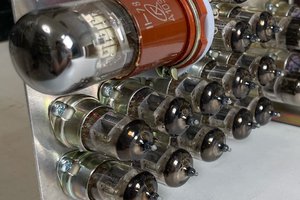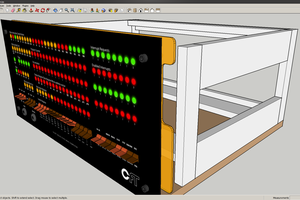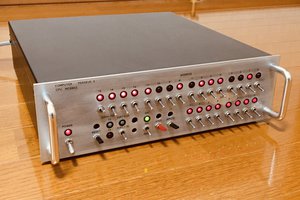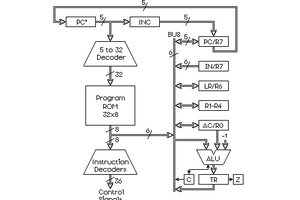The Ferranti Mercury Computer was able to process nearly 100 instructions. My emulator implements 79/100 in the actual version.
There is a "Computing Store" (this was a magnetic core memory).
-> 32 pages, 64 words per page, 20 bits per word. This is 5120 bytes (in modern terms, that is 8 bit/Byte)
There is a "Backing Store" (this was a magnetic drum memory).
-> 1024 sectors, 64 words per sector, 20 bits per word. This is aprox. 164kB (in modern terms, 8 bit/Byte) . The first two sectors are "read only", since they contain very important basic I/O functions.
There are 7(seven) 10bit registers, and one 20bit accumulator. The 7th register was also known as the SAC (short accumulator), and has special flags associated to it. There is no "Register 0".
-> Input/Output: There was a Teletype machine (keyboard plus 5 hole paper tape), at least two DAC, and "parallel ports".
There was a fron panel with switches to load data and addresses manually if required.
Magnetic tape was optional, but there are specific machine instructions to operate magnetic tape devices.
There was a "Hoot", physically a digital output conected to some kind of speaker. By changing the rate of the pulses sended to this speaker, it was possible to reproduce "square wave" sounds of different frequencies.
There are Conditional and Unconditional Jumps, and Indirect Addressing, but subroutine return addresses must be implemented by software.
Memory used for program fetching and data storage is the same thing ("Computing Memory"), so it was possible to overwrite a program on excecution time (this is a good thing in this kind of computers, but a dangerous system...).
Floating point is implemented in hadware, as well as multiplication and division (this was a scientific computer..!!)
The "operating system" of this computer is called "INPUT ROUTINE". It allows to make backup copies of drum sectors to paper tape, and restore sectors from paper tape backups, among many other functions and programs.
There was a "programming languaje", called "MERCURY AUTOCODE". I do not have a copy of this, and I'd love to have one.
 Julián Lell
Julián Lell

 Artem Kashkanov
Artem Kashkanov
 Alexios C
Alexios C
 Mitsuru Yamada
Mitsuru Yamada
I visited the Computer History Museum in 2017, it was a wonderfull experience..! At that time I knew that the museum had a Ferranti Pegasus/Mercury board (I think it was a delay line memory board, so maybe it was part of a Pegasus register or a Mercury magnetic drum's logic), but unfortunately it was not at exhibition at that moment. I'd love to have detailed pictures of that...! There're no schematics or good pictures of this boards available on the web.